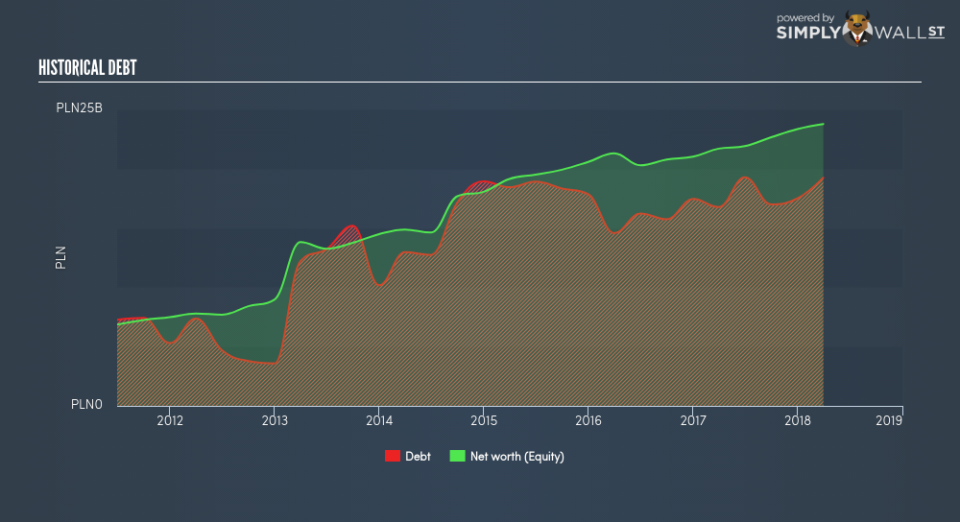How Did Bank Zachodni WBK SA’s (WSE:BZW) 10.62% ROE Fare Against The Industry?

The content of this article will benefit those of you who are starting to educate yourself about investing in the stock market and want a simplistic look at the return on Bank Zachodni WBK SA (WSE:BZW) stock.
Bank Zachodni WBK SA (WSE:BZW) outperformed the Diversified Banks industry on the basis of its ROE – producing a higher 10.62% relative to the peer average of 9.00% over the past 12 months. On the surface, this looks fantastic since we know that BZW has made large profits from little equity capital; however, ROE doesn’t tell us if management have borrowed heavily to make this happen. Today, we’ll take a closer look at some factors like financial leverage to see how sustainable BZW’s ROE is. View out our latest analysis for Bank Zachodni WBK
Breaking down ROE — the mother of all ratios
Return on Equity (ROE) weighs Bank Zachodni WBK’s profit against the level of its shareholders’ equity. An ROE of 10.62% implies PLN0.11 returned on every PLN1 invested. In most cases, a higher ROE is preferred; however, there are many other factors we must consider prior to making any investment decisions.
Return on Equity = Net Profit ÷ Shareholders Equity
ROE is measured against cost of equity in order to determine the efficiency of Bank Zachodni WBK’s equity capital deployed. Its cost of equity is 11.78%. Given a discrepancy of -1.16% between return and cost, this indicated that Bank Zachodni WBK may be paying more for its capital than what it’s generating in return. ROE can be split up into three useful ratios: net profit margin, asset turnover, and financial leverage. This is called the Dupont Formula:
Dupont Formula
ROE = profit margin × asset turnover × financial leverage
ROE = (annual net profit ÷ sales) × (sales ÷ assets) × (assets ÷ shareholders’ equity)
ROE = annual net profit ÷ shareholders’ equity
Essentially, profit margin shows how much money the company makes after paying for all its expenses. The other component, asset turnover, illustrates how much revenue Bank Zachodni WBK can make from its asset base. Finally, financial leverage will be our main focus today. It shows how much of assets are funded by equity and can show how sustainable the company’s capital structure is. Since ROE can be artificially increased through excessive borrowing, we should check Bank Zachodni WBK’s historic debt-to-equity ratio. The debt-to-equity ratio currently stands at a sensible 80.99%, meaning the above-average ROE is due to its capacity to produce profit growth without a huge debt burden.
Next Steps:
ROE is one of many ratios which meaningfully dissects financial statements, which illustrates the quality of a company. Bank Zachodni WBK’s ROE is impressive relative to the industry average, though its returns were not strong enough to cover its own cost of equity. Its high ROE is not likely to be driven by high debt. Therefore, investors may have more confidence in the sustainability of this level of returns going forward. Although ROE can be a useful metric, it is only a small part of diligent research.
For Bank Zachodni WBK, there are three pertinent factors you should look at:
Financial Health: Does it have a healthy balance sheet? Take a look at our free balance sheet analysis with six simple checks on key factors like leverage and risk.
Valuation: What is Bank Zachodni WBK worth today? Is the stock undervalued, even when its growth outlook is factored into its intrinsic value? The intrinsic value infographic in our free research report helps visualize whether Bank Zachodni WBK is currently mispriced by the market.
Other High-Growth Alternatives : Are there other high-growth stocks you could be holding instead of Bank Zachodni WBK? Explore our interactive list of stocks with large growth potential to get an idea of what else is out there you may be missing!
To help readers see pass the short term volatility of the financial market, we aim to bring you a long-term focused research analysis purely driven by fundamental data. Note that our analysis does not factor in the latest price sensitive company announcements.
The author is an independent contributor and at the time of publication had no position in the stocks mentioned.


